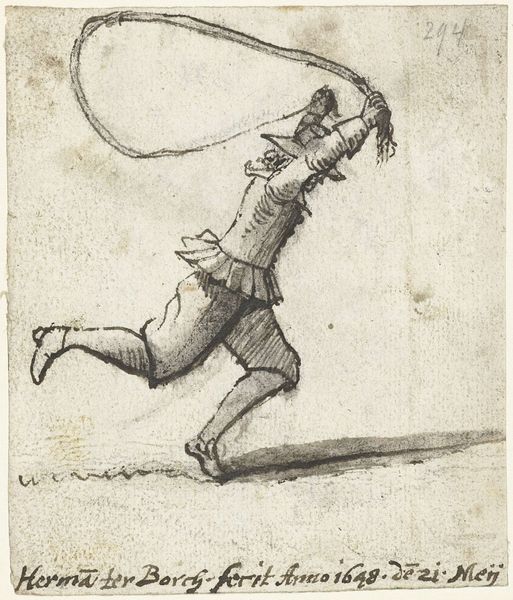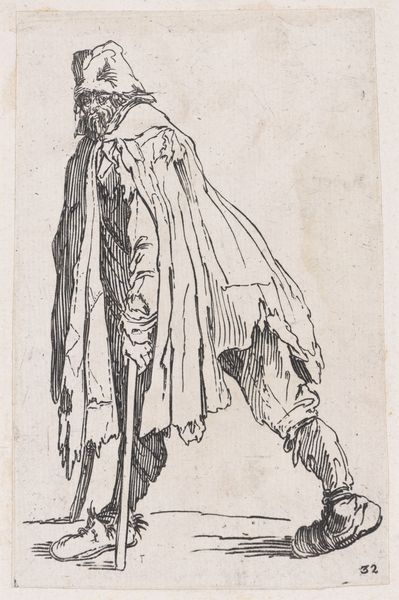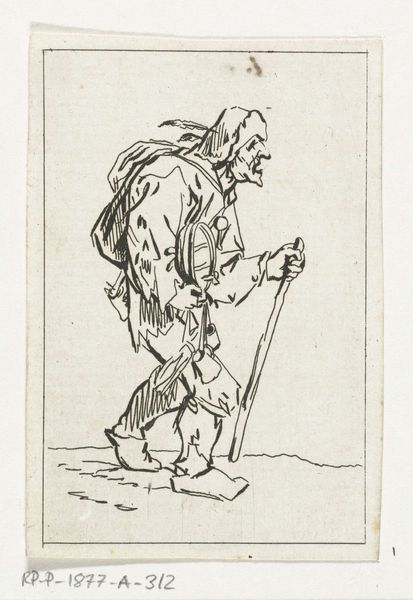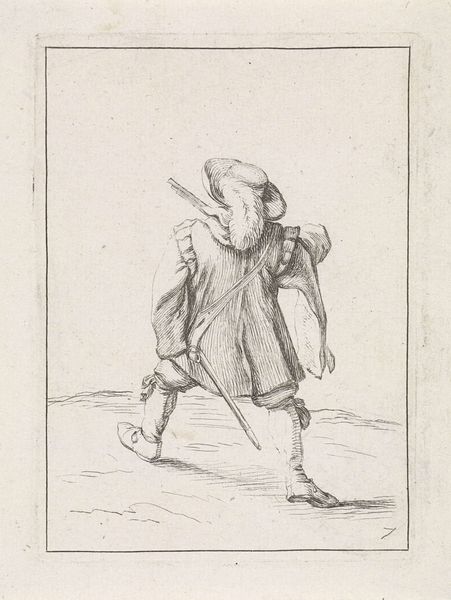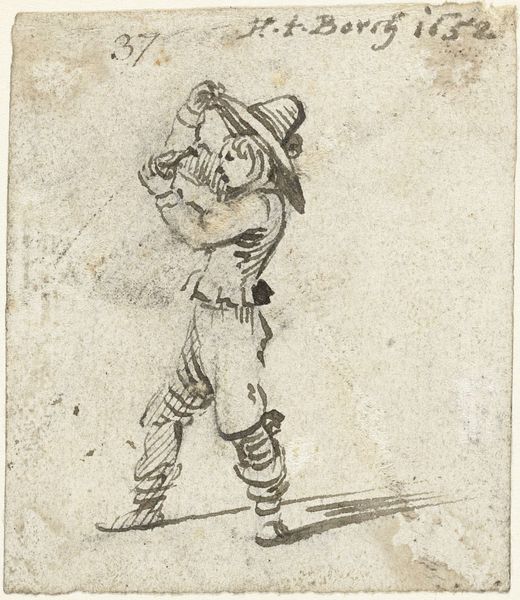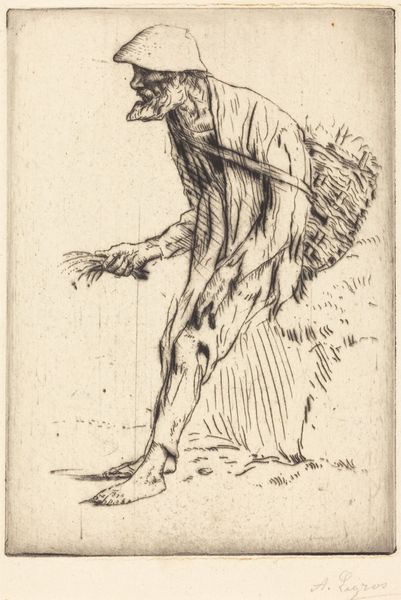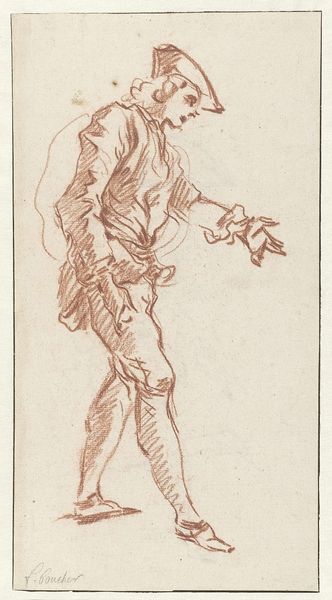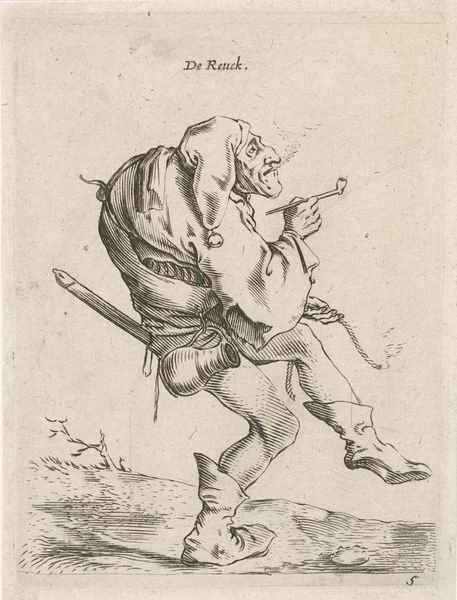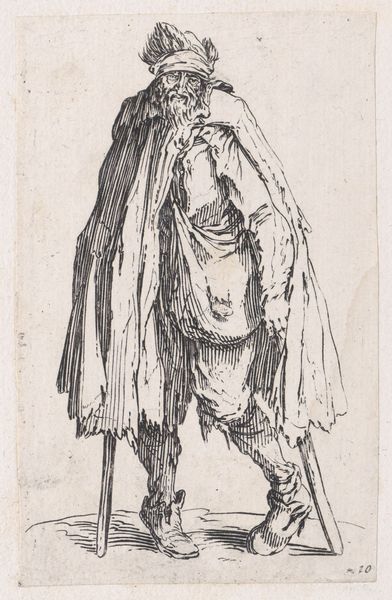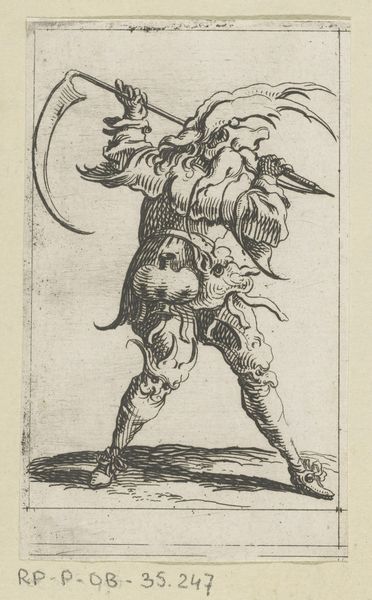
drawing, ink, pen
#
drawing
#
light pencil work
#
quirky sketch
#
dutch-golden-age
#
pen sketch
#
figuration
#
personal sketchbook
#
ink
#
ink drawing experimentation
#
pen-ink sketch
#
line
#
sketchbook drawing
#
pen
#
genre-painting
#
storyboard and sketchbook work
#
sketchbook art
#
fantasy sketch
Dimensions: height 103 mm, width 77 mm
Copyright: Rijks Museum: Open Domain
Curator: What a charming, slightly absurd figure. "Gooiende man," or "Throwing Man," as it's known, is a pen and ink drawing attributed to Gesina ter Borch, created around 1653. You can find it here at the Rijksmuseum. Editor: He looks like he's stepped right out of a dream! Or maybe a particularly whimsical play. The figure's contorted posture and exaggerated gestures feel very theatrical. Curator: Precisely! Ter Borch's sketchbook provided a private space to experiment, away from the formal portraiture of her male contemporaries. What symbols do you read into it? His upraised hand... what's he throwing, symbolically? Editor: Maybe not so much a specific object, but defiance, or a commentary on social constraints? It's gestural, you see? It's how he *feels* toward social forces. That large, almost drooping hat gives him a caricatured air, as does the strange detail of his trousers... quite unusual, but suggesting a type of rogue. Curator: Or perhaps rebellion! The act of 'throwing' itself. Breaking with conventions of Golden Age art... Gesina Ter Borch came from a family of artists, with her half-brother Gerard ter Borch the Elder acting as teacher... maybe this is adolescent rebellion against the establishment, given she was about 20 at the time. Editor: Yes, the familial influences must have been immense. It speaks to the cultural pressure young female artists must have experienced in that time period. And consider, the drawing exists outside of that world. This is freedom through form... the energy captured in the linework is almost more powerful than the figure itself. Curator: Do you think there is evidence of preparatory sketches beneath this ink work? Perhaps to re-work or establish a more complete sense of figuration. Editor: You can see some light pencil work but in no real sustained manner. It's immediacy suggests that Ter Borch may have focused more on gesture or even storytelling rather than striving for anatomical perfection. The sketch is more of an evocative, quirky little performance. Curator: Ultimately, it gives us a peek into a mind grappling with, or rather *throwing* itself against, societal norms and artistic traditions. It's a moment of uninhibited creativity captured in ink. Editor: It resonates still today because, for artists, and maybe for all of us, that struggle never really ends. It's freeing, like I mentioned, to see this very early instance of that impulse given such vivid form.
Comments
No comments
Be the first to comment and join the conversation on the ultimate creative platform.
